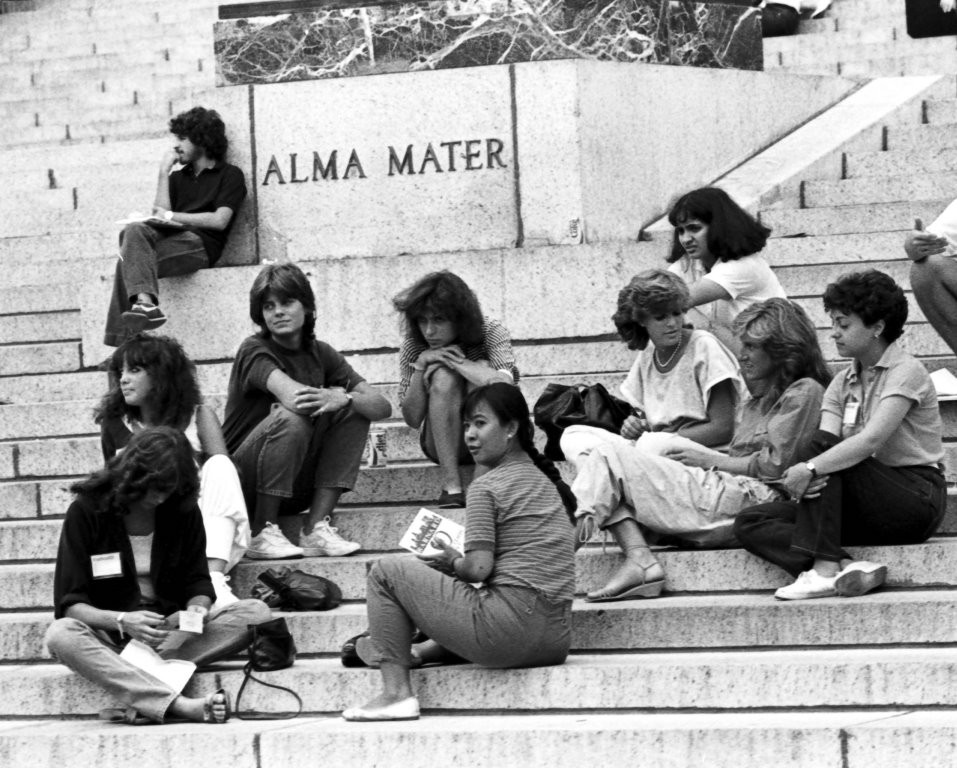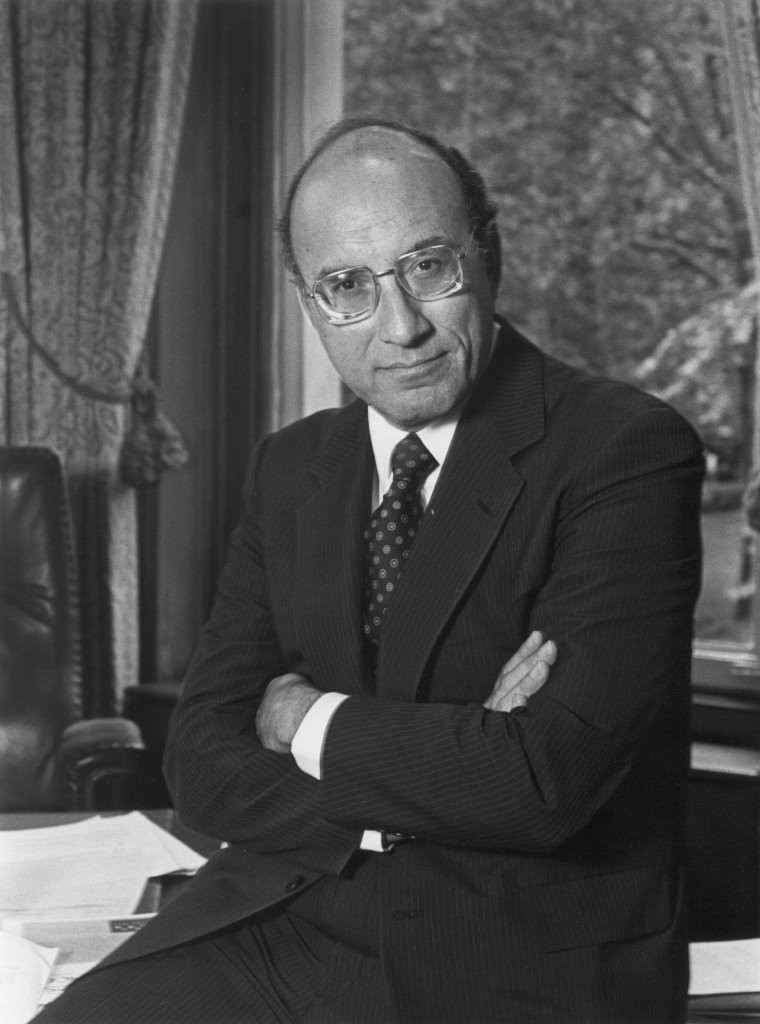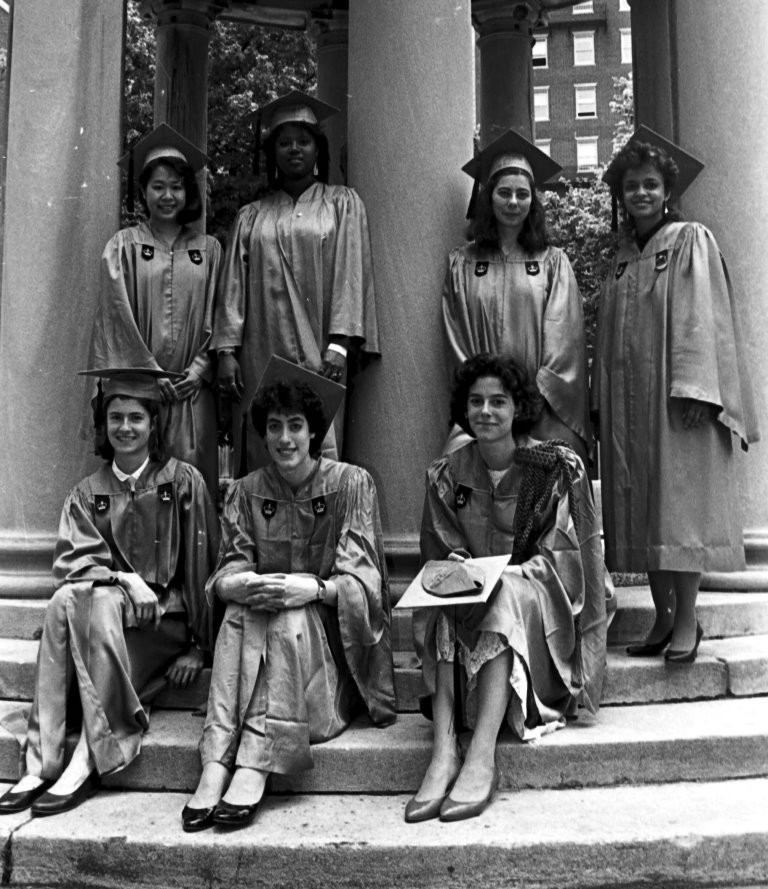Coeducation at Columbia
“Coed At Last”: Columbia College and the Road to Coeducation
The establishment of Barnard College in 1889 diffused the question of coeducation at the undergraduate level for almost a century. The women’s college developed a stellar reputation throughout the twentieth century, providing its students a thorough education and the use of Columbia’s world-renowned facilities. Cross-registration between Columbia and Barnard, though limited, offered students some aspects of a coeducational experience. By the twentieth century, the issue of coeducation seemed a redundant one. [1]
A 1973 intercorporate agreement between Columbia and Barnard drew the two colleges closer together. Barnard students would be given freer access to Columbia courses and facilities. In return, Barnard would pay Columbia a yearly fee to compensate for Barnard students’ new benefits, and the awarding of tenure to Barnard faculty members would be subject to Columbia’s approval. In addition, the agreement also marked a growing cooperation between the colleges to weed out redundancy in faculty members. [2]
Why, then, the late 1970s push for coeducation in Columbia College? After the women’s liberation movement of the 1960s and 1970s, an all-male education seemed anachronistic and incomplete to most administrators, faculty members, and students. Many Americans came to view the denial of educational opportunities to women as fundamentally unjust.
But most members of the Columbia community believed that coeducation would benefit College men just as much, if not more, than it would women. During the 1970s, Columbia went through a period of economic and academic stagnation, due in part to budgetary problems and to the political upheavals that had taken place on campus during the late 1960s and early 1970s. A 1979 study of Columbia’s academic priorities compiled by a faculty committee revealed that the quality of education at the University had declined steadily since World War II; once a university on the cutting edge of pure and social scientific research, Columbia now contributed little to the academic community. [3]
No good news came out of the admissions department either. The number of applications to the college had been dropping for years; administrators feared that men chose not to come to Columbia because it was an all-male school. The Columbia College Survey on Coeducation, released in September of 1980, gave voice to the unhappiness of most of Columbia’s undergraduates. An overwhelming number of them favored coeducation and believed that their quality of life would improve if the College began admitting women. Columbia administrators came to believe that admitting women would not only add talented female applicants to the admissions pool; it would trigger a rise in male applications as well. [4]
But Columbia University already had a perfectly good place to educate women: Barnard College. Ironically, many students, faculty, and administrators at Barnard, named after one of the most ardent advocates of coeducation, now fought against admitting women to the College. In particular, these critics of coeducation feared that Columbia administrators would agree to merge Barnard and Columbia colleges. Barnard advocates argued that the women’s college offered a liberal arts experience, small classes, and a faculty focused on teaching rather than publishing and research. They feared that a merger would trigger a decline in the quality of education at Barnard.
Reflecting the separatist strains of the women’s liberation movement, Barnard advocates emphasized the importance of preserving an all-female learning environment. As long as sexism continued to exist in academia, many Barnard students argued, women would continue to opt for a more supportive, egalitarian option – the women’s college. A merger would disregard the need of the Barnard undergraduates who preferred this all-female learning environment.
Many Barnard students and administrators, moreover, campaigned against the admission of women to Columbia College even if Barnard was left intact. Many feared that Barnard College would become redundant. A coed Columbia College would dilute the quality of applications that Barnard received. The prestige and, consequently, the quality of education at the women’s college would decline.
On the other side of Broadway, support for coeducation grew among students and faculty alike. The majority of the Columbia faculty formally endorsed coeducation in 1975. In the spring of 1981 they voted in favor of admitting women for the second time, and urged the Columbia trustees to begin implementing its coeducation plans in the next year. Columbia College students criticized administrators for dragging their feet on the coeducation issue and decried the fact that Barnard-Columbia negotiators did not consider to the needs and desires of Columbia students. The Columbia Daily Spectator objected to the secretive nature of negotiations: “The point is that whatever the agreement is,” an editorial concluded, “it will not be the result of months of faculty and student input or public discussion.” [5]
As talk of coeducation spread throughout Columbia College, the Barnard administration took a defensive position. During the Barnard presidency of Jacqueline Mattfield (1976-1980), negotiations between Columbia and Barnard came to a standstill, as Barnard administrators would not consider endorsing a coeducation settlement which, they felt, would be a death sentence for their school. In late 1980, the trustees of Columbia decided to take action. They authorized new Columbia president Michael Sovern to begin formulating a plan to implement coeducation “with or without the cooperation of Barnard.” [6] President Mattfield was forced to resign; the new president, Ellen Futter, maintained a much more cordial relationship with Sovern and Columbia.
Negotiations picked up momentum in 1981. The university’s Breslow Committee Report on Coeducation, released in 1981, concluded that thanks to the postwar baby boom, coed and women’s colleges would only get more competitive – Barnard, in other words, had nothing to fear. In order to maintain Columbia’s competitive edge, the committee suggested that Columbia begin admitting women, but make no increase to the size of the College’s incoming class.
Taking into consideration Barnard’s fears and the Breslow Committee’s assurances, President Sovern penned a coeducation agreement with President Futter in January of 1982. Barnard would remain all-female and would maintain its affiliation with Columbia University, thereby ensuring its financial stability and its students’ access to Columbia facilities. Barnard gained greater control over the tenure process for its faculty, and made certain that Barnard athletes would be allowed to participate in Division 1 sports through the school’s affiliation with Columbia. In turn, Columbia College would begin admitting women in the next admissions cycle. The first coed class would arrive on campus in the fall of 1983.
Despite the gains President Futter secured in the negotiations, many at Barnard still believed that the school’s days were numbered. In the immediate years after Columbia College went coed, Barnard’s admissions numbers seemed to prove the pessimists correct: in 1983, ninety percent of women who were accepted to both Barnard and Columbia chose to attend the latter.
Throughout the 1980s, Barnard struggled to keep its admissions numbers competitive. By the early 1990s, they appeared to have weathered the storm. President Ellen Futter and her successor, Judith Shapiro, launched major fundraising campaigns during their tenures. In addition, the Barnard admissions office emphasized studies that showed that female students who attended all-women schools were better able to reach their academic potential than those who attended coeducational institutions. By 1998, Barnard application numbers were rising at a rate of 117 percent in one year, and the school’s acceptance rate had dropped to a competitive thirty-three percent. [7]
Much more so than Barnard, Columbia College benefited immensely from the decision to go coed. During the winter of 1982-1983, application numbers rose by several hundred applications more than the admissions office had anticipated. Women’s applications proved to be among the most impressive. In a few years, Columbia College regained its once-lost reputation for attracting the nation’s best students. Columbia College’s decision to admit women benefited the school, just as administrators had predicted it would. [8]
Not everyone praised Columbia for its decision to go coed. In January 1982, just after the University announced its intention to begin admitting women, Lynn Hecht Schafran wrote an editorial in the New York Times. Reminding the newspaper’s readers the real reason that Columbia went coed, she asked, “do bright female students exist only so that these schools can pay their bills and boast ten applications for every place instead of five?” [9]
Schafran was right. Columbia did not begin admitting women because it adhered to feminist principles. The decision to go coed was motivated by the College’s need to raise application numbers and improve the quality of life for its students. But the women of the Class of 1987 showed College administrators just how much talent women could bring to the university. When the first coeducational class graduated, it boasted a female valedictorian and salutorian. Its female members were some of the most talented students the College had seen in many years.
Ironically, Barnard College, the school named after the University’s most ardent advocate of coeducation, proved the least interested in welcoming coeducation to the University’s undergraduate programs. There is no doubt, however, that F.A.P. Barnard would have been pleased with the accomplishments of the women of Columbia College, Class of 1987.
[1] Robert McCaughey, Stand Columbia: A History of Columbia University in the City of New York, 1754-2004. (New York: Columbia University Press, 2003), 168.
[2] McCaughey, Stand, Columbia, 524; Trustee Minutes, 1973, University Archives, Rare Book & Manuscript Library, Columbia University in the City of New York.
 [3] McCaughey, Stand, Columbia, 518; Presidential Commission on Academic Priorities in the Arts and Sciences: Columbia University, December 1979. New York: The University, 1979.
[3] McCaughey, Stand, Columbia, 518; Presidential Commission on Academic Priorities in the Arts and Sciences: Columbia University, December 1979. New York: The University, 1979.
 [4] Women: Columbia College Survey on Coeducation. Historical Subject Files, University Archives, Rare Book & Manuscript Library, Columbia University in the City of New York.
[4] Women: Columbia College Survey on Coeducation. Historical Subject Files, University Archives, Rare Book & Manuscript Library, Columbia University in the City of New York.
[5] Office of Public Information press release January 22, 1982, Women: Coeducation, Historical Subject Files; "Sovern Knows What He Wants," Spectator, September 21, 1981.
[6] McCaughey, Stand, Columbia, 538.
[7] Rosalind Rosenberg, Changing the Subject: How the Women of Columbia Shaped the Way We Think About Sex and Politics (New York: Columbia University Press, 2004), 297; Lisa Szymanski, "More Applicants Means Higher Selectivity for Barnard Class of ‘02" Spectator April 2, 1998.
[8] Howard J. Bashman and Richard Froehlich “Coed revives admissions,” Spectator, January 26, 1983.
[9] Lynn Hecht Schafran, “In the Professions, It Still Pays to Be Male,” New York Times, January 20, 1982.


